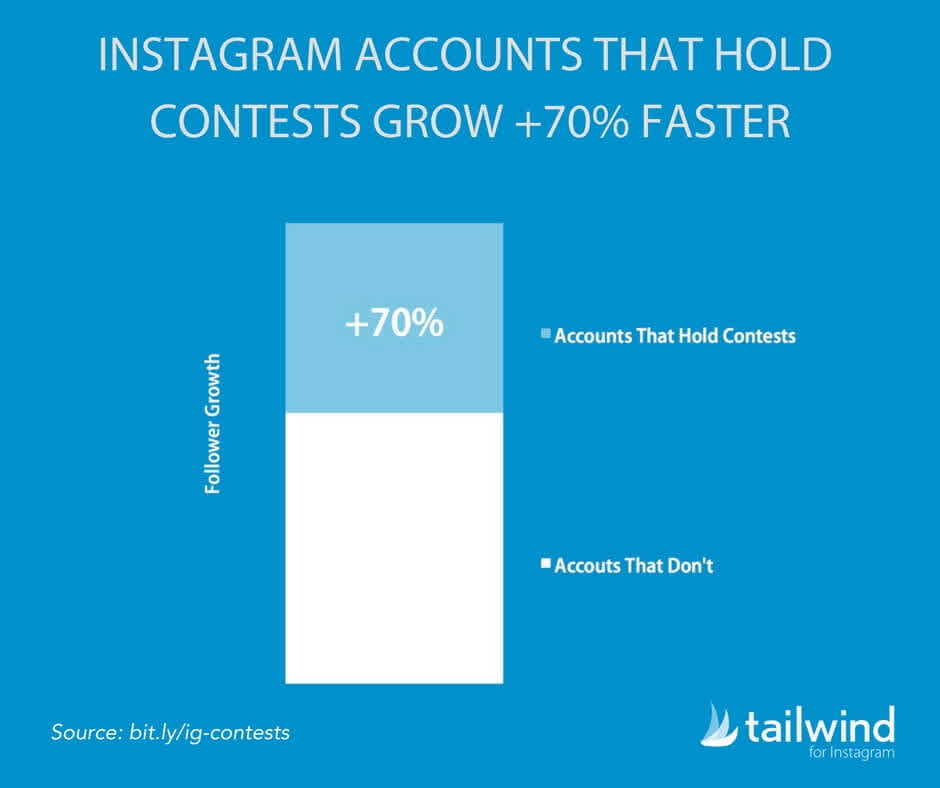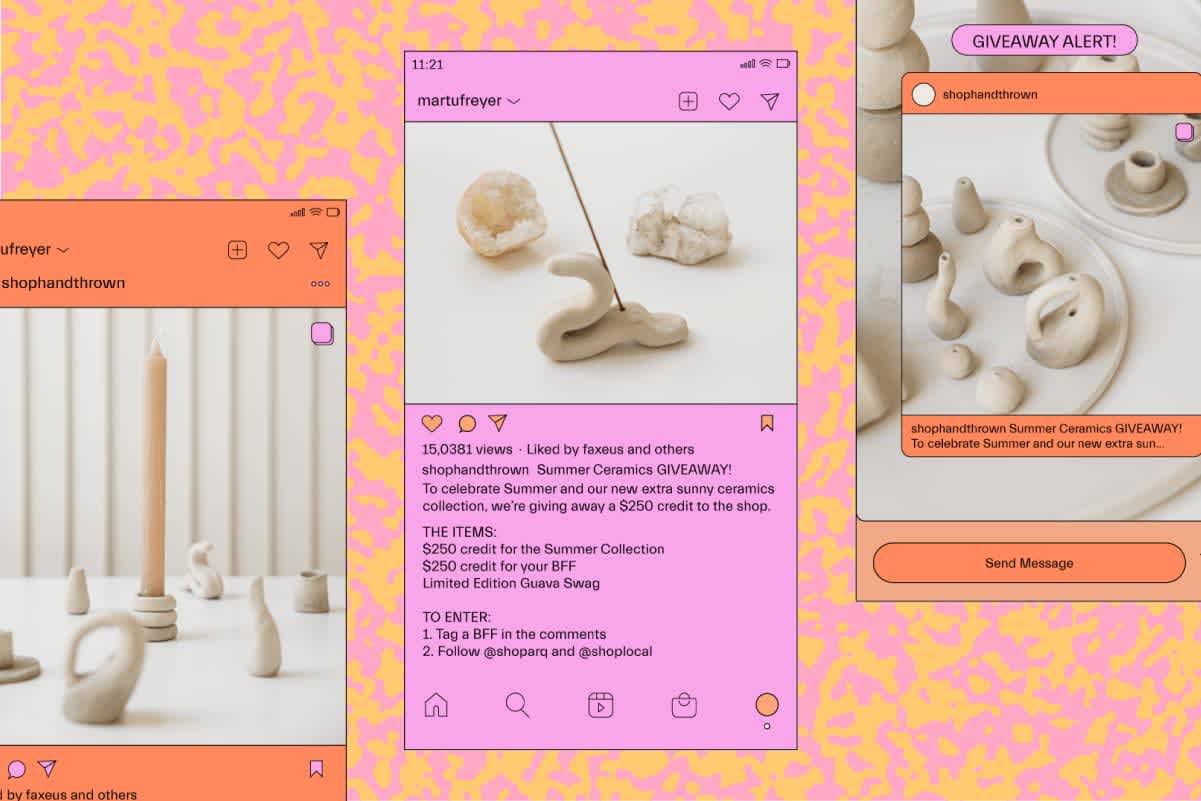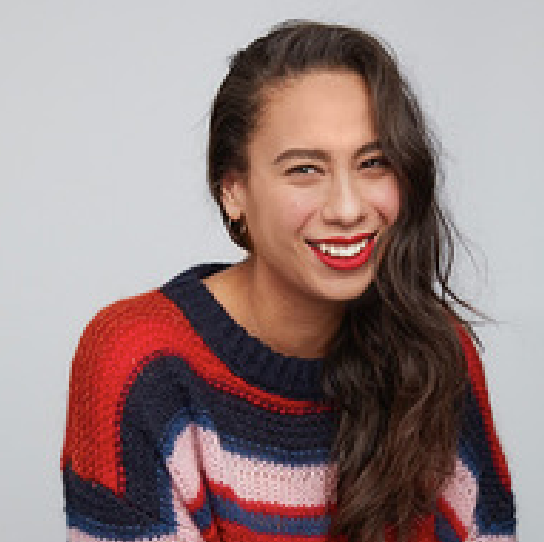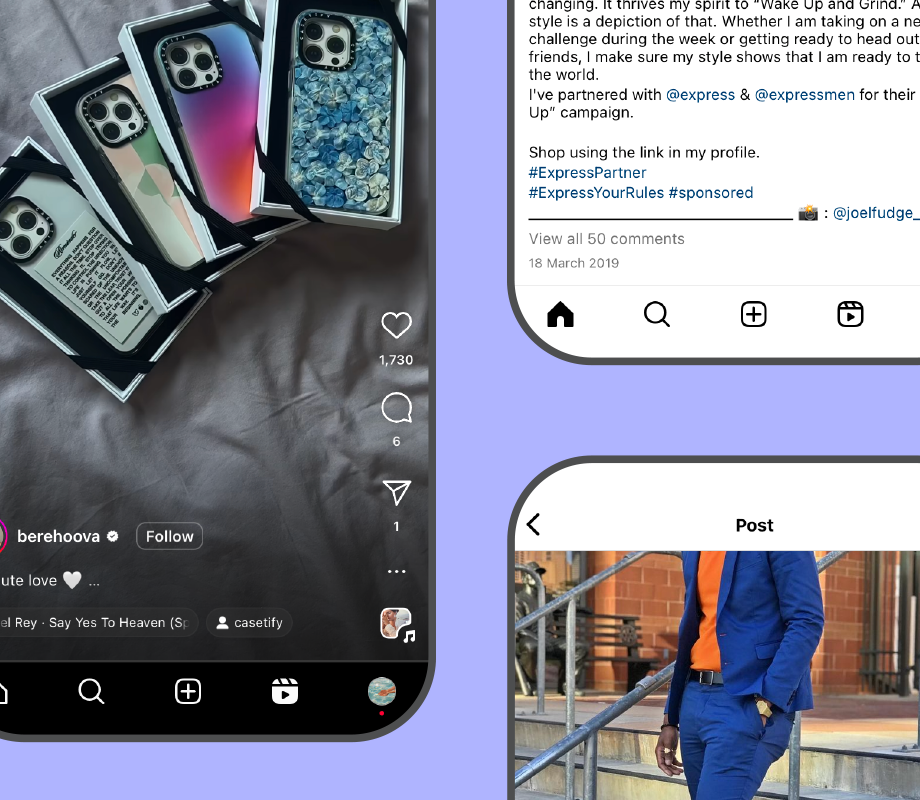If you want to grow your following on Instagram, hosting a giveaway can be one of the most effective tactics.
With the right strategy, you can reach thousands of potential new followers -- all while building a stronger sense of community around your brand.
Ready to get started? We're sharing everything you need to know to plan the perfect Instagram giveaway in this guide.
Table of Contents
Join over 1 million marketers to get social news, trends, and tips right to your inbox!
Email AddressWhy You Should Host an Instagram Giveaway
Instagram giveaways are a powerful tactic for encouraging engagement from your community and reaching new audiences.
Accounts that host giveaways hold the potential to attract hundreds, if not thousands, of entries and followers.
In fact, a study conducted by Tailwind found that Instagram giveaways can help grow your followers 70% faster in three months than if you didn’t host a contest at all.

Source: Tailwind
But brands and businesses can often see drop-offs once the giveaway is closed.
So it’s all about hosting intentional, well-planned giveaways that attract your target audience -- so you can reach people who actually want to stick around and engage with your content.
Find out how in our step-by-step guide below.
Plan and schedule your Instagram posts in advance with Later — get started today for free!
How to Do a Giveaway on Instagram: A Step-by-step Guide
Instagram giveaways may seem straightforward, but there's a huge difference between a good giveaway and a great one.
A great Instagram giveaway will support your overarching marketing goals, tap into your target audience, and support your brand values.
Step #1: Determine Your Marketing Goals
The first step towards running a successful Instagram contest is to understand what you want to achieve.
The best and most successful Instagram contests are intentional and well thought out, with a clear underlying goal.
Do you want to grow your following? Give back to your community? Promote a product? Boost brand awareness? Raise awareness of a social issue? Increase engagement? Show affinity with another brand?
Having a crystal clear vision of your goals will help fine-tune your strategy and keep your campaign on track.
TIP: Build out your marketing campaigns with the help of an AI tool.
Step #2: Decide on an Instagram Giveaway Prize
Next up, it’s important to consider exactly what you’ll be giving away -- a compelling prize that elicits excitement and motivates users to enter is the name of the game.
Make sure the prize is relevant and fits your audience’s needs. Whether it’s a product, service, or experience, you’ll want to choose a prize that’s enticing to both your existing and target audience.
You can get super creative here. if you were to partner with another brand, what brand does your audience really love? What products or experiences would make your community feel great right now?
And it doesn't have to be something directly within your industry. For example, beauty retailer SpaceNK partnered with a luxury retreat destination to offer their community the opportunity to win an exclusive getaway.
When you have a few ideas lined up, test them out! Ask a few of your community members if they'd be excited by the opportunity to win the prize, and whether they'd be motivated enough to like, tag friends in, or share the post.
Step #3: Set the Entry Criteria
Once you've got your eye on the prize, you'll need to define how someone can enter your giveaway. This will all depend on your goals (see Step #1).
For example, if your top goal is to attract new followers, you'll want to make sure that following your account is part of the entry requirements. You might also want to specify that entrants must tag 3-5 friends to be eligible.
You’ll also need to cover some of the admin details, such as:
How long will the contest run for? Specify closing dates and don’t forget to include timezones.
Will your contest be open to certain countries?
Is there an age limit? If your contest is only open to ages 18 and above, note that.
Include Instagram’s
regarding promotions on the app.
These details may seem a little boring, but transparency is key for a successful giveaway.
Step #4: Promote Your Instagram Giveaway
Now it’s time to launch your giveaway.
For example, if you’re on Instagram, announce your contest through a grid post, story, and Reel -- take advantage of all avenues.
Be sure to use a strong image for the post itself and include a clear call-to-action in your caption to encourage as many entries as possible.
For the best results, don't forget to share your announcement post at your best time to post.
If your brand lives on multiple platforms (aka Twitter, TikTok, Facebook) consider cross-promoting for additional reach.
TIP: Re-promote your Instagram giveaway on stories before the contest ends!
Ready to find your best days and times to post on Instagram? The feature is available on all paid plans. Upgrade now!
How to Pick a Winner on Instagram
If you want to host an Instagram giveaway, it's important to have a fair and objective process in place to select a winner.
To do this, you can manually add all entries to a spreadsheet and use the random function to generate a winner. However, this can be quite a time-consuming process.
Alternatively, you can use an automated system to speed things up, such as:
Easypromos Easypromos uses the official Instagram API to import all the comments from your giveaway post to help determine if users entered the contest correctly and help you randomly select a winner.
Instagram Comment Picker This free and trusted tool does all the heavy lifting for you by selecting a random name from any contest ran through an Instagram Business or Creator account.
Wishpond Wishpond allows you to easily manage and monitor your Instagram giveaway by keeping track of all entries -- their tools will help you determine a randomized winner.
Whichever option you choose, always make sure your process is fair and (if required) transparent. Trust is important on Instagram -- and a sketchy giveaway can do more harm to a brand's reputation than good.
As we've already covered, there are tons of ways you can approach an Instagram giveaway.
To provide some context, here are three different tactics you can take inspiration from:
#1: Introduce the Triple Threat: Tag, Follow, and Share to Enter
One of the most popular strategies to gain social traction is through a tag, follow, and share entry requirement. This format is a super straightforward and clear way to gain tons of engagement from various lanes on a single post.
F.Miller used this tactic like a pro by asking users to tag a friend for a chance to win their fifth-anniversary Necessity Kit.
#2: Partner with a Brand that Taps into Your Target Audience
Not only is teaming up with a like-minded brand an easy way to leverage their audience, it's also a great way to ensure you're attracting the right followers.
Think about it: double the traction, double the engagement. It's a win-win.
For example, Fresh Restaurants collaborated with their health enthusiast neighbor, Spinco to launch the ultimate workout package giveaway.
In a combination of various social requirements, users had to follow both accounts, like the post, tag their favorite workout buddy, and share on their Instagram Story for five additional entries -- generating a lot of engagement.
#3: Generate a Social Buzz With a Task-based Entry
For a creative spin on an entry, you can ask your followers to whip up a caption, answer a question, or create a piece of content to enter your giveaway.
This type of entry requires a little more effort from users, but it's an awesome way to build brand loyalty and wider awareness.
For example, documentary maker Louis Theroux encouraged his audience to redesign the cover of his new book, Gotta Get Theroux This, for the chance to win a signed copy.
This creative concept amassed over 13K likes and 585 comments, while the contributions were shared widely on social.
With a slew of audience-building advantages, Instagram contests are a treasure-trove for driving engagement.
Brands both large and small are taking advantage of Instagram giveaways to increase visibility, drive social shares, and boost brand awareness.
Turn Instagram into a traffic-driver for your content with Later’s Linkin.bio feature — available for free!




